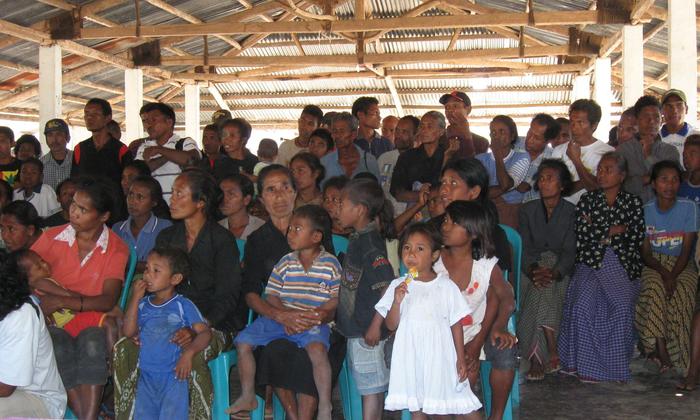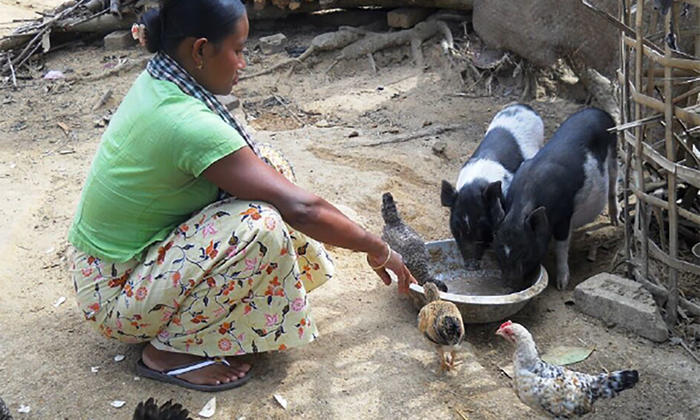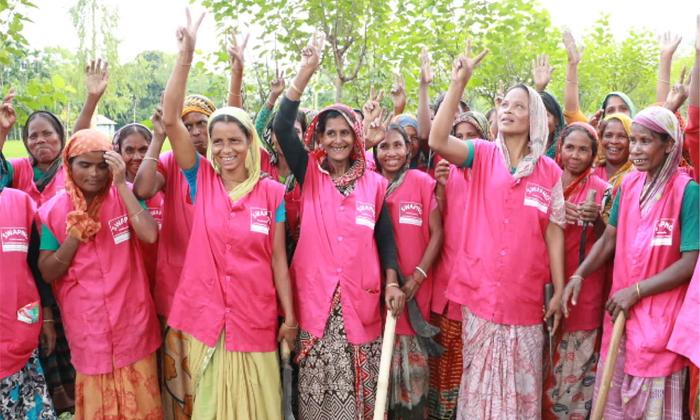“The trainings changed our way of thinking. They convinced us to pool our resources and made us think about establishing a large common refinery.”, Endalkashew, Oil processor
Case study
Planting Seeds of Change in Ethiopia
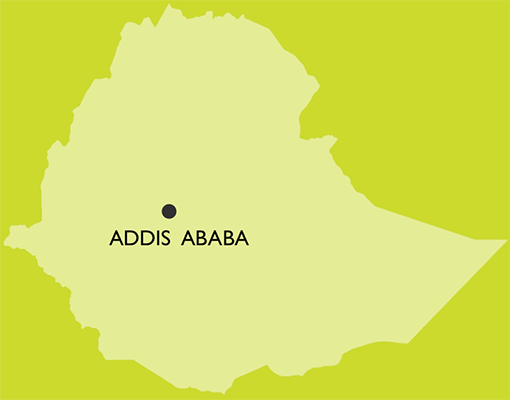
SDGs ADDRESSED
This case study is based on lessons from the joint programme, Ethiopia: Edible Oil Value Chain Enhancement
Read more
Chapters
Project Partners


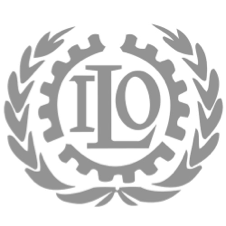
1. SUMMARY
The diverse landscape of Ethiopia is particularly favourable for the cultivation of a variety of edible oilseeds and the oilseed industry was the third most important export commodity in the country. In 2010, oilseeds such as sesame, nigerseed and linseed brought in 18 per cent of Ethiopia’s foreign exchange earnings, making them a vital part of the national economy. Nonetheless, the industry still remained largely under-developed and suffered from issues in production, processing and marketing of the seeds.
The “edible oil value chain enhancement programme” (the Programme) was designed as a pilot project to address these issues in the oilseed sector in Ethiopia. The Programme worked to showcase development of an efficient oilseed value chain. It sought to promote entrepreneurship, provide capital and services to farmers, raise demand for agricultural products and connect farmers with markets, addressing the production, handling, processing, marketing and distribution of oilseeds. The intended outcomes of the Programme were to generate employment and income, and enhance the productivity and quality of oilseeds and edible oil production , leading to increased food security and increasing the income of farmers, processors and traders.

Oil processing unit, Bahir Dar
2. THE SITUATION
Ethiopia had favorable agro-climatic conditions for cultivation, yet the nature of the sub-sector was labor intensive. The prevailing business environment was conducive, and the substantial local demand provided sufficient room for crushers to work at full capacity. Despite this potential, however, both oilseed commodity production and edible oil processing industry in Ethiopia remained to a large extent underdeveloped. Issues and priorities of immediate and particular concern to the sector included production, processing and marketing aspects.
Production: Oilseeds were the third most important commodity in terms of production and export in Ethiopia. According to the Central Statistical Agency of Ethiopia (2008 - 2009), oil crops were cultivated in about 0.86 million hectares, involving close to four million small holder farmers in the main production areas. The main oilseed crops included sesame, nigerseed and linseed. Though this production contributed to household income, it was constrained due to too small-scale and fragmented land holdings. Eighty-six per cent of the sizes of holdings under oil seeds production fell in the range of less than five hectares, holdings of greater than five and less than ten hectares accounted for twelve per cent and those greater than ten hectares accounted for less than two per cent of the total estimated area under oilseeds. A low use of agro-inputs, poor farm management and a lack of market-oriented production such as contract farming and warehouse receipt system, together with the high cost and limited availability of inputs (improved seeds, fertilizer and chemicals), added to overall low productivity.
Processing: Most domestic oil processing was undertaken by an estimated 850 small-scale and micro oil processing plants, accounting for ninety-five per cent of the manufacturing base of the edible oil industry. Capacity utilization in the industrial branch was seriously constrained both by the quantity and quality of oilseeds available. Many of these small and medium enterprises used obsolete equipment and technology. Working conditions and the level of sanitary and hygienic standards was far below acceptable levels. Edible oil refining capacities were limited to some twenty-six medium and large industries, utilizing about thirty per cent of capacity. Considering import–intensity (a technical coefficient that measures the share or magnitude of imported intermediate goods to produce a unit of final demand) the edible oil industry, at less than two per cent, provided an opportunity to be competitive both domestically and internationally, given the domestic base of the raw material, oilseeds, and integration with the local economy. Capacity utilization of the edible oil sub-sector was, however, by far the lowest among the food manufacturing sector industries and the average Ethiopian manufacturing industries over the past few years.
Marketing: Marketing and distribution of oilseeds was mainly done by small and medium scale traders with poor marketing facilities, especially for collection, storage and transportation, which caused high post-harvest losses. The marketing chain was long, with many intermediaries adding little value to the final product, with high transaction costs incurred. Lack of access to packaging services, poor access to financial services, and poor vertical and horizontal collaboration within, as well as external to the chain, all negatively impacted the industry.
The Programme officially ran from January 2010- June 2013 and was designed to utilize existing edible oil markets to their full potential through expanding market access, providing vital capital to farmers, raising demand for oilseeds and addressing issues of production, distribution and marketing. It aimed to be an income-generating activity promoting entrepreneurship and build upon an existing industry in the Ethiopian community. The Programme, which focused on the creation of public-private partnerships, aimed to attend to problems experienced due to fragmentation within the sector and resolve them through establishing networks between all participants in the supply and demand chain.
3. STRATEGY
The Programme made immense progress in attending to the issues encountered across all aspects of industry—production, processing and marketing—through taking the initiative to establish large public-private partnerships inclusive of a range of actors working in the edible oil industry. To overcome the lack of quality oilseeds and lack of networks to connect the value chain, two Private Limited Companies (PLCs) were set up in Oromia and Amhara as joint processing associations working together with government organizations, business development services, private marketing agents and farmers. These alliances increased productivity and renewed an industry formerly believed to be dying.
These associations consisted of 82 oil processors with the objective of collaborating to purchase land, oil refinery equipment and to develop an improved business strategy with the assistance of other public and private actors such as business development and financial service providers, farmers and government.
The innovative joint managerial approach taken by the three UN agencies involved, UNIDO FAO and ILO, overcame many of the technical issues experienced due to a lack of cohesion in the sector. In the new model, each partner made a significant contribution to the formation and running of the companies. The processors were engaged in a learning experience and had the support of a number of parties to strengthen their business capacity. They received training from business development service providers, access to bank loans to upgrade their equipment and collectively contribute to the purchase of a factory and were also introduced to new networks of farmers and buyers to market and sell their products. The processors were not the only ones to receive support. Seven hundred farmers also received training in edible oil management practices, entrepreneurship, marketing and finance. The farmers were also eligible to access loans to purchase seeds.
The Ethiopian Government also made a vital contribution to the Programme. It provided industrial land to the processors to encourage growth. Through alignment with national policies, the UN agencies gained the full support of the government, giving them the flexibility to pilot these new initiatives. The agencies and partners brought an interdisciplinary skillset to the Programme, allowing for efficacy and ease of implementation. The partnership framework with the government, notably the Ministry of Industry, provided serious impetus to implementation nationally and regionally.
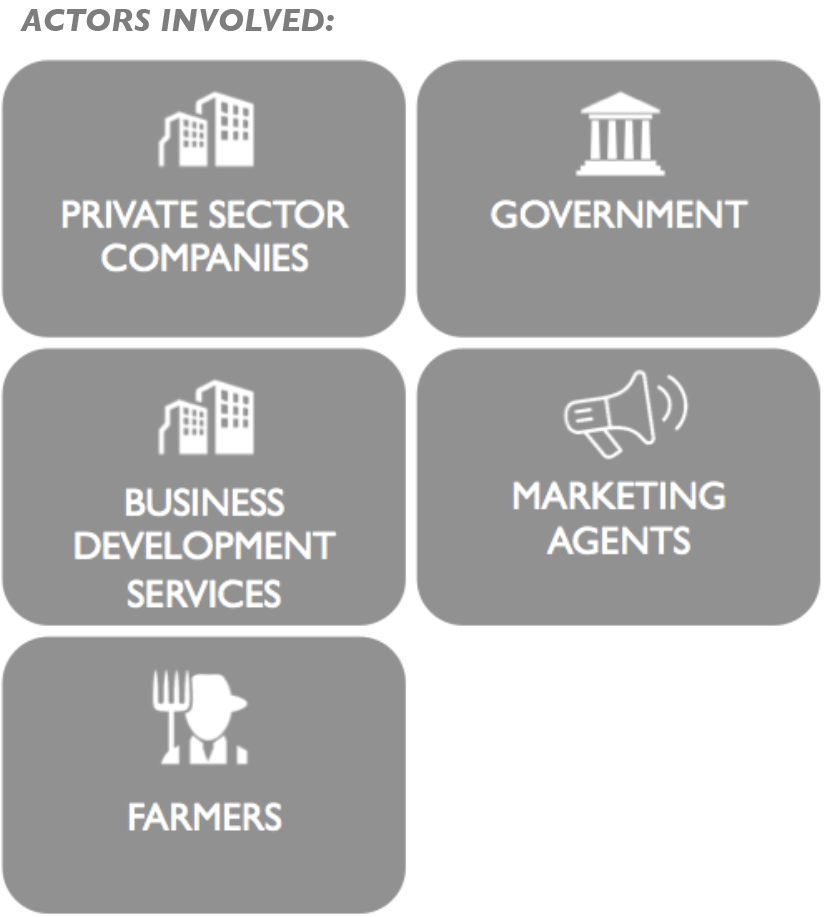
4. RESULTS AND IMPACT
The Programme served as a good example of how a struggling industry was revived through cooperation in the form of a public-private partnership. Overall, the initiative involved 4 large processing plants, 92 Small and Medium Enterprises and 4 farmer units.
Small, Micro and Medium-Enterprise capacities were enhanced from about 20 per cent to 80 per cent functionality. Through training in modern techniques and visits to major oil factories, the processors developed new skills and realized that traditional forms of processing were inadequate. As one oil processor, Endalkashew, explained, ‘The trainings changed our way of thinking. They convinced us to pool our resources and made us think about establishing a large common refinery.” Local ownership was evident through the financial contributions made by the oil processors, contributing 30 per cent of the funds needed to establish two large processing facilities.

Processed edible oil
The newly created processing associations encouraged communication and linkages throughout the value chain, from farmers to government and financial services. These networks further benefited the industry by providing farmers access to markets and raw materials for the processors.
Not only were capacities increased through linkages and training, but the Development Bank of Ethiopia also opened 3 new lines of credit which remained receptive to loan requests from producers. This illustrated that trust in the industry was restored down the entire value chain, not just in the minds of the farmers and processors, but also within financial and government institutions, suggesting longevity of the partnership.
Progress was also made with regards to women’s empowerment and environmental sustainability. Nearly half of the small businesses were headed by women. Pollution was reduced and sustainable agricultural techniques were encouraged.
1 Endalkashew in Elise Sabbion ‘ Uniting Ethiopia’s Oilseed Producers’ MDGF Where we work: Ethiopia, http://www.mdgfund.org/story/uniting-ethiopia-s-oilseed-producers
5. CHALLENGES
The acquisition of land to create a cluster to gather oilseed processors onto the same premises took considerable time. The allocation by local authorities of land for the two industrial zones also took longer than planned, but eventually was finalized, setting the ground for the relocation of processors.
Several factors highly impacted the execution of the start-up phase, including the elections six months after the Programme’s approval and the subsequent lead ministry’s division into the Ministries of Trade and Industry.
The Programme was adjusted, selecting local seeds for distribution while at the same time starting the improvement cycle of breeder seeds into basic seeds ready for certification. The seed breeding process was completed and agencies were flexible to adjustments, but the changes initially impacted the overall implementation rate which led to late disbursement of the second tranche of funds.
Some UNIDO and ILO activities were revised. The detailed situation analysis showed that first the Programme had to build trust among stakeholders and facilitate discussions about competition, quality standards, processing and marketing issues. Then Public Private Partnerships (PPP), Hazard Analysis and Critical Control Points (HACCP) certification or international marketing would follow.

Right edible oil producers' facility
6. LESSONS LEARNED
The following were the lessons learned during Programme implementation in the field:
- The strong leadership on the Government’s side ensured a strongly correlated design (related to the value chain), a tighter logic to the results framework and a momentum to the Programme throughout implementation.
- The ‘inception period’ allowed some redefinition of activities (based on the diagnostic studies) while retaining the output/outcome framework within the value chain structure. Yet, the inception should be considered an addition to the implementation period and not as part of it.
- The contribution of the universities added particular technical and social/ethical value to implementation approaches.
- Implementation was much more effective where specific, trained resources were assigned to delivery. The Cluster Development Agents (CDAs) added value throughout implementation of the work with processors; the agronomist specialists engaged after the mid-term evaluation to address weaknesses on the production side had a significant positive impact, both on implementation activities and on results.
- We learned that an integrated/multi-sectoral approach to development should be adopted to multiply results and increase impact. However, this could only be ensured by minimizing overlap of activities among agencies and clearly separating outputs and responsibilities.
- On the operational side, we learned that having the Programme focal points sitting together in a physical space enhanced communication among agencies.
- The fielding of CDAs, acting as local coordinators for the different agencies, was a vital arrangement for timely implementation and trust building with beneficiaries. In fact, the CDAs were mainly implementing UNIDO activities and subsequently FAO decided to have a similar arrangement in order.
- Ministry/Bureau-Agency synergies, as well as the related producer-processor-marketer relationships, provided a much more significant design and implementation context than would have been possible with a focus on a single component. The evolving relationships between farmers, cooperatives and processors (associations and PLCs) was in no way forced.

7. SUSTAINABILITY AND POTENTIAL FOR REPLICATION
Throughout implementation, the Programme focused on capacity development of direct beneficiaries and their associations as well as of government institutions and local/national government officers with the view that the knowledge transfer and managerial/technical skills could be transferred and extended after the Programme ended to other stakeholders in the sector and thus ensure the networks created would continue the work initiated under the Programme. Associations, PLCs and other organizations were also supported in the development of roadmaps, action plans and actual design of facilities in the industrial zone, the realization of which went beyond the Programme’s scope. Cluster stakeholders from government and the private sector demonstrated a strong commitment to this change.

Worker processing oilseeds
The Government of Ethiopia, beneficiaries and UN agencies all agreed about the potential sustainability of the demonstrated benefits and results of the Programme. Nevertheless, a second phase of the Programme is required to consolidate the change that has occurred. With this view, a final workshop was held after the end of the Programme to disseminate key documents and information related to the Programme, particularly the results of the final edible oil programme evaluation, and to present the draft project proposal jointly prepared by UNIDO, ILO and FAO for a second phase of the Programme. The Ministry of Industry took the lead in the resource mobilization process for the second phase of the Programme and advocated for UN agencies to commit some bridging funds for the transition period during which these resources should be mobilized.

Oild processing facility

